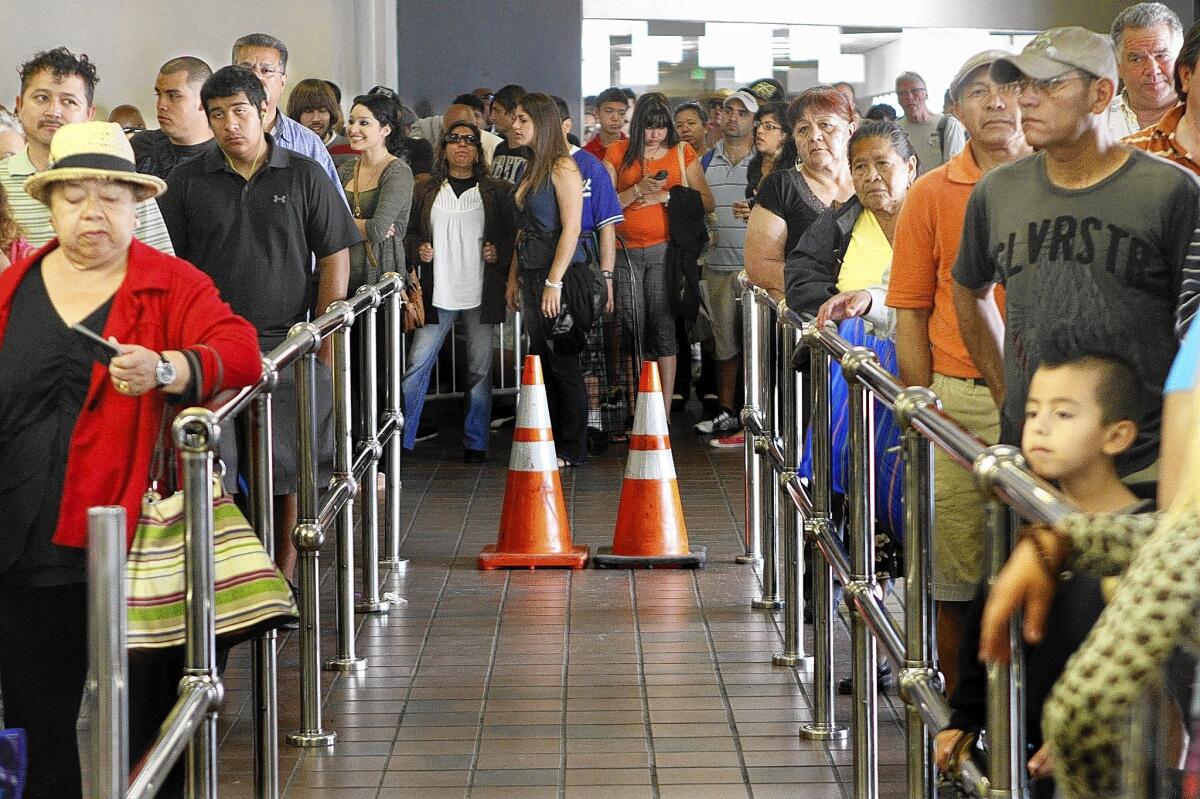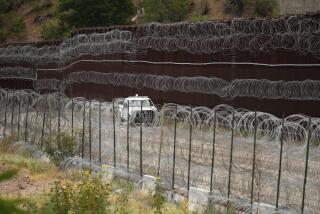Trump’s asylum ban will only worsen problems at the border

- Share via
President Trump’s latest effort to undo U.S. asylum law bans asylum to immigrants who cross through any other country before entering the United States. As of Tuesday, only immigrants who have officially lost their asylum bids in another country or have been victims of “severe” human trafficking can apply for asylum in the United States if they have traveled through any other country.
The rule will likely prevent the vast majority of asylum claims. Regardless of its legality, the rule is bad policy. If it is implemented as the president envisions, it will create worse problems than the ones that already exist.
The main problem that the rule is supposed to address is the large number of people entering the country illegally along the southwest border with Mexico, but this rule change will not significantly reduce the number of crossers. It will encourage them to hide, making them less likely to be caught.
Previously, the vast majority of asylum applicants, families and unaccompanied children sought out Border Patrol agents and turned themselves in so that they could receive an asylum hearing. So far this year, fully 70% of Border Patrol “apprehensions” were of people who were not trying to evade U.S. government detection, according to Acting Homeland Security Secretary Kevin McAleenan.
That’s astounding. In the early 2000s, nearly all border crossers tried to sneak into the country. Today that has become a relatively minor problem. The share of apprehensions occurring within a mile of the border has exploded since 2012 because immigrants make no effort to avoid contact with the government.
Immigrants have largely stopped sneaking in because they have a rational expectation that they will receive asylum after a lengthy court process. About 1 in 5 will be granted asylum. Even if their claims fail, they can live and work legally in this country for years while the process plays out without having to make the more dangerous treks required to avoid border guards.
From a security perspective, this system is far from ideal. But overall, it is better than the alternative. Processing asylum seekers certainly takes time and resources. Rather than having to chase down and forcibly apprehend them, however, agents can peacefully process immigrants as if they were waiting at customs at Los Angeles International Airport. This is safer for the agents and the immigrants.
Immigrants who request asylum receive medical screenings, background checks and determinations of their asylum claims’ credibility. The U.S. government has the opportunity to screen out and quickly deport criminals. Perhaps for this reason, Border Patrol is encountering far fewer criminals along the southwest border. Asylum is effectively allowing the agents on patrol to focus on the criminal element — another benefit of the current approach.
The asylum process also allows the government to screen out those it doesn’t find “credible” (nearly a quarter of applicants in 2019). This assessment ultimately gives the government more control over who enters the country than when people simply sneak in — something the Trump administration claims to want. Even with the risk of being quickly denied, immigrants still favor the legal over the illegal path.
Under the asylum ban, the calculus should quickly change. Suddenly, migrants will have no reason to seek out border agents, so far more will attempt to sneak into the U.S. The result will likely be more illegal and unregistered entries. Agents may be forced into more dangerous situations as they chase fleeing migrants. And migrants will cross in more dangerous locations, leading to thousands more deaths each year.
Families will also split up. While adults will have to try to sneak into the country, their children will cross without their parents because U.S. law affords special protections to unaccompanied minor migrants. This will burden multiple agencies whose jobs require them to find shelter and placement for these children in our country.
Trump appears to imagine that he can rewind Central American migration back to 2011 when fewer non-Mexicans tried to cross. But he cannot. The networks across countries, through Mexico and into the U.S. interior have been established. Central Americans can board a bus and be at the U.S. border in days. They often have families and friends who can help them once they get here — about 1.7 million Central Americans have crossed into the U.S. since 2012.
An asylum ban will backfire. But the president is responding to a real problem. Immigrants shouldn’t have to trek to the U.S. border to enter. They shouldn’t have to cross illegally. They shouldn’t have to claim asylum. They clearly want to join a process that could lead to legal immigration.
The problem the president and Congress need to address is the lack of other legal ways to migrate from Central America. They should not take away immigrants’ only viable option to do so.
David Bier is an immigration policy analyst at the Cato Institute.
More to Read
A cure for the common opinion
Get thought-provoking perspectives with our weekly newsletter.
You may occasionally receive promotional content from the Los Angeles Times.










